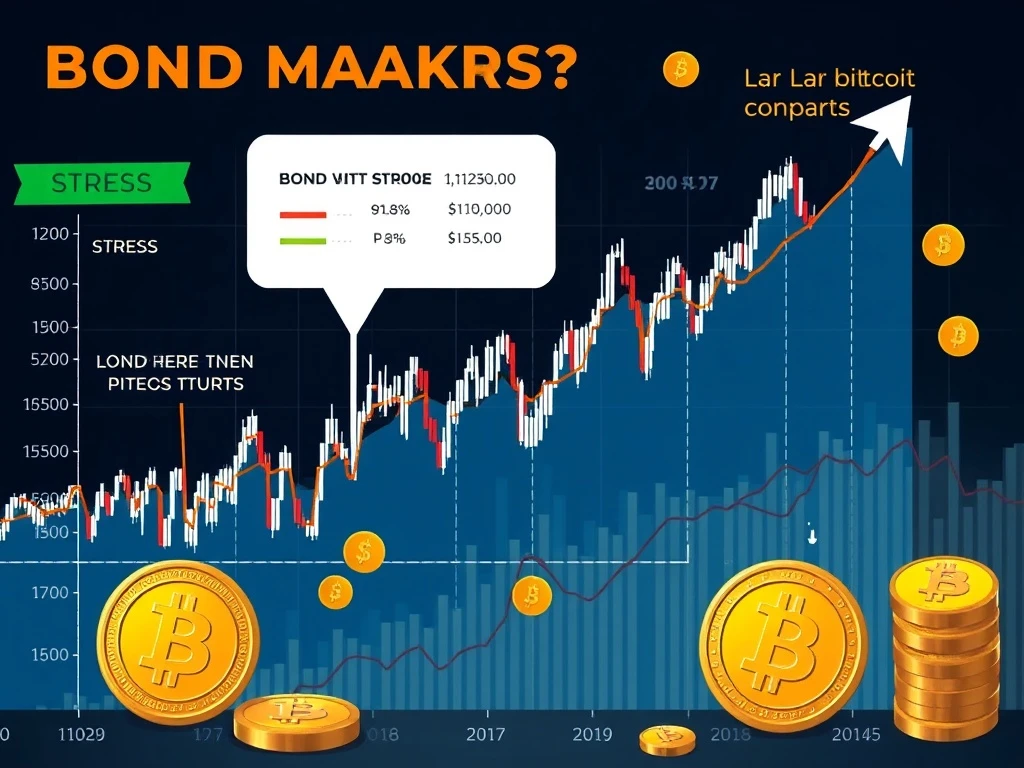Unlocking Bitcoin’s Next Opportunity: Decoding Bond Market Stress Signals

Bitcoin investors constantly seek the next big opportunity. Could a crucial Bitcoin buy signal emerge from unexpected corners of the financial world? Recent analysis suggests that stress within the bond market may indeed provide the next key indicator for cryptocurrency enthusiasts.
Decoding the Bitcoin Buy Signal from Bond Markets
A potential Bitcoin buy signal may soon appear, according to Alphractal founder Joao Wedson. He highlights the ICE BofA Option-Adjusted Spread (OAS) as a reliable indicator. This metric measures the additional yield investors demand for holding risky corporate bonds over safer US Treasurys. When the OAS spikes, it signals fear and tightening liquidity within credit markets. Historically, these periods of stress have often marked local bottoms for Bitcoin’s price.
Currently, the OAS remains relatively calm. This suggests that markets have not yet fully priced in the next wave of financial pressure. However, if credit spreads begin to widen in the coming quarter, a common outcome during liquidity tightening, it could set the stage for a new Bitcoin accumulation phase. Observing this bond market indicator is therefore crucial for identifying potential entry points.
Macroeconomic Pressures and US National Debt
The broader macroeconomic landscape reinforces this perspective. The US national debt has now surged past $37 trillion. This staggering figure requires over $2.6 billion in daily interest payments. A recent US credit downgrade reflects growing concern over this fiscal trajectory. Furthermore, the 10-year Treasury yield stands at 4.3%, a notable increase from 3.9% just a year ago. Consequently, rising yields elevate borrowing costs across the entire economy.
Wedson believes this combination of fiscal stress and increasing yields could eventually destabilize traditional markets. He suggests Bitcoin could benefit as an alternative asset during such periods. While he anticipates an aggressive bear market sooner or later, he also predicts a phase of euphoria preceding it. Wedson projects much of 2026 and beyond will prove challenging for the US economy.
Bitcoin Whale Activity and Short-Term Volatility
Despite potential long-term catalysts, on-chain data reveals conflicting signals regarding short-term price movements. Institutional demand for Bitcoin remains robust, exemplified by MicroStrategy’s latest acquisition on August 17. The firm purchased 430 BTC for approximately $51.4 million. This brings their total holdings to an impressive 629,376 BTC.
However, Bitcoin whale activity suggests growing selling pressure among the largest holders. The number of mega whale addresses, those holding over 10,000 BTC, has dropped to its lowest level in 2025. This shows a consistent negative 30-day trend since mid-July. Similarly, whale wallets in the 1,000–10,000 BTC range have declined. This indicates profit-taking following recent price highs. Adding to potential market volatility, nearly 32,000 dormant BTC, aged 3–5 years, moved in a single transfer. This significant shift, valued at about $3.78 billion, represents the largest movement from this age band in over a year. These combined signals suggest that while institutional buyers accumulate, broader whale activity and revived dormant supply may fuel short-term corrections, keeping volatility elevated.
Navigating the Crypto Market Analysis Ahead
The current market presents a complex picture. Investors face a blend of promising long-term indicators and immediate volatility signals. A detailed crypto market analysis becomes essential for informed decision-making. The bond market, specifically the ICE BofA OAS, offers a unique lens through which to identify future accumulation phases. Its stress points could indeed provide that crucial next Bitcoin buy signal.
However, the observed Bitcoin whale activity and large dormant coin movements highlight ongoing short-term risks. Consequently, readers should conduct their own thorough research before making any investment decisions. Every investment and trading move involves inherent risk. Understanding both macroeconomic trends and on-chain metrics is vital for navigating the evolving cryptocurrency landscape effectively.








